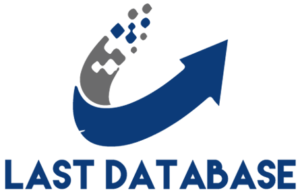Understanding the difference between user flows and user journey flows is crucial for designing seamless customer experiences. While both concepts help map interactions, they Key Differences serve different purposes: User flows focus on specific tasks within a product, while user journeys capture the holistic, cross-channel experience. Confusing the two can lead to gaps in design, missed pain points and inefficiencies in improving user experience (UX).
User Flow vs. User Journey: At-a-Glance Comparison
Feature
User Flow
User Journey
Definition
Step-by-step visual representation of how a user completes a specific task
Broader map of a user’s full experience across multiple touchpoints
Scope
Narrow, focused on a single action or goal
Broad, covering multiple mobile database interactions across channels
Perspective
Product-centric (how users move through a feature)
Experience-centric (how users interact with a brand over time)
Example
Steps to reset a password in an app
The full process of onboarding, using, and engaging with a Software as a Service (SaaS) product
Best Used For
Identifying friction points in specific workflows
Understanding and optimizing the overall user experience
Common Format
Flowcharts, decision trees, wireframes
Journey maps, timelines, persona-based storytelling
Key Question
How does a user complete this task?
What is the user’s overall experience high-quality content from start to finish?
Understanding User Flows: Streamlining Individual Interactions
A user flow represents a step-by-step sequence of Key Differences actions a customer takes within a specific touchpoint or process. It helps identify friction points and improve efficiency in single interactions. These flows are particularly crucial in today’s digital landscape, where customers expect quick, efficient solutions to their problems.
Consider a customer updating their billing address via a chatbot. The user flow maps how they initiate the conversation, provide account details, confirm changes and receive confirmation. If users frequently abandon the process during verification, flow analysis might reveal an overly complex authentication process causing frustration. This granular view allows organizations to make targeted improvements that significantly impact customer satisfaction.
User flows excel at micro-level focus, examining specific tasks within a channel with precision and clarity. They are inherently goal-driven, designed to identify and phone number list eliminate roadblocks that prevent customers from completing key actions. This makes them particularly valuable for quick optimizations, such as refining agent scripts, improving chatbot dialogues and streamlining IVR paths.
In practice, user flows often reveal surprising insights about customer behavior. For instance, a telecommunications company might discover that customers attempting to upgrade their service package often abandon the process when asked to verify their identity twice within the same session. This insight, only visible through detailed flow analysis, can lead to meaningful improvements in the verification process.
Understanding User Journeys: Mapping the Full Customer Experience
A user journey examines the complete, cross-channel experience of a customer, showing how different touchpoints connect over time. Unlike user flows, which focus on specific interactions, user journeys help optimize the end-to-end experience, reducing frustration from disjointed interactions and Key Differences creating a more cohesive brand experience.
The holistic nature of user journeys makes them invaluable for understanding the broader context of customer interactions. They reveal not just what customers do, but why they do it and how their experiences with different touchpoints affect their overall satisfaction and loyalty.
Consider a customer experiencing technical issues with their internet service. Their journey might begin with self-service troubleshooting on the company’s website, where they search through FAQ pages and knowledge base articles. When this proves insufficient, they might move to chat with a virtual assistant, hoping for more specific guidance.
If the virtual assistant can’t resolve their issue, they might call the support center, where they’re often forced to repeat information that they’ve already provided through other channels. Finally, after multiple transfers, they reach someone who can help — but by this point, their frustration has significantly impacted their perception of the company.






